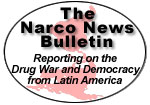Water Gel Explosive
by lpumsunpiyush
NOTICE: TO ALL CONCERNED Certain text files and messages contained on this site deal with activities and devices which would be in violation of various Federal, State, and local laws if actually carried out or constructed. The webmasters of this site do not advocate the breaking of any law. Our text files and message bases are for informational purposes only. We recommend that you contact your local law enforcement officials before undertaking any project based upon any information obtained from this or any other web site. We do not guarantee that any of the information contained on this system is correct, workable, or factual. We are not responsible for, nor do we assume any liability for, damages resulting from the use of any information on this site.
WATER GEL EXPLOSIVE
The gel is made by mixing the liquid nitro paraffin, preferably nitro methane, in an aqueous oxidizer salt solution in the presence of a gelling agent for the aqueous and a gelling agent for the nitro paraffin. The entire mixture is then mixed where the nitro paraffin and salt phases are simultaneously gelled. Once the desired predetermined viscosity is reached, the mixing is stopped and the gel is ready.
Some theory:
The thing is to make a good explosive that can be readily made for use. First, knowing that the effectiveness of the insoluble portion of the nitro paraffin (nitro methane, it would also be nitro ethane, nitro propane etc. but nitro methane is at the best and good for this purpose) I suppose for the water gel explosive depends upon good dispersion of the nitro paraffin particles throughout the aqueous phase of the composition and that good dispersion is only achieved through the use of small, very fine particles (though it is soluble in water). Examples of inorganic oxidizing salts, which can be used basically, are ammonium, and alkaline metal nitrates, per chlorates and chlorates. Preferred examples of commonly used salts are ammonium nitrate, ammonium per chlorate, sodium nitrate, sodium per chlorate, potassium nitrate, potassium per chlorate, other salts. Though fine powdered aluminum may be added as a fuel for greater output or sensitivity, as they are combustible and adds to the explosives sensitivity.
The sensitivity can be enhanced by including air voids during mixing or by adding a chemical gas release agent or by adding bubbles during the mixing, for example hollow glass can be added.
One of the gelling agents used are insoluble in water but soluble in and capable of gelling nitro methane. The other gelling agent is soluble in water and capable of gelling aqueous solutions. After the gelling agents and other agents can be added in one operation or added separately. The preferred agent used to gel the nitro methane is a cyanoethylether, it is a derivative of (guar gum) gallactomannan gum. (Say polysaccharides). Other gelling agents for the nitro methane are nitrated guar (gums) and nitrocellulose. For gelling the oxidizer salt solution water-soluble gums and gel modifiers such as guars can be used, as they are soluble in water. Other examples of gelling agents for the aqueous phase are carboxymethyl cellulose, water-soluble starches, pregellatinized starch, cereal flour available), and other plant’s gums.
On percent basis by weight, the nitro paraffin phase may, vary between 1-50% of the total composition weight. The actual water present may vary between 5-30% of the total composition weight, while the gelling agents for the aqueous phase may vary between 1-15% of the water present.
The preferred percentage amounts are 3-30% nitro paraffin, 0.2-2% nitro paraffin gelling agent, 2-10% water gelling agent, 0.5-5.0% water gel cross linking agent and 7-25% water.
For example, this method can be followed:
The water and the inorganic oxidizers are mixed and heated to a temperature of about 50-60 degree C. later in this solution the water gelling agents and those gas releasing hollow glasses are added and are agitated to a suspension. And in an other container the nitro paraffin is mixed with its gelling agent and mixed to make a good suspension. This suspension is taken and added to the earlier prepared water suspension and Mixing is continued until a predetermined viscosity is achieved.
Take care while handling nitro methane as it toxic by inhalation. And dangerous fire and explosion risk is also there. For those derivates of guar gum, the guar gum can also be used as a whole. The all above can be modified as per for the requirement. The basic idea is to make light explosive from available and combustible materials.
|

